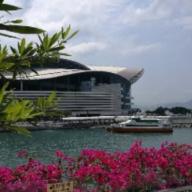稅務: 出租機器給附屬公司的問題
2008-03-20 6:30 am
若一間parent company公司(生意是買賣機器)出租多部未售出的機器給自己的subsidiaries, 但subsidiaries只能租出部分機器給第三者,未租出的只有淍空.此安排會否被稅局認為是蓄意讓parent company claim wear and tear allowances來避稅?
回答 (2)
2008-03-21 5:33 am
✔ 最佳答案
The IRD will ususally consider (1). whether a proper agreement was made for the leasing of the 3 machines (2) whether the agreement was made in the ordinary course of business and at arm's length.In accounting, the cost of this inventory will then be capitalised in the books of Holding ( H ).
So, whether the Subsidiary ( S ) could or could not leases these machines to other parties is another issue. The crucial issue is whether the rent charged by H is for 3 machines, a fixed rent and in the ordinary course of business and at arm's length. If so, the wear and tear allowance will be allowed. Moreover, S could claim the leaseing charge as a full deduction in its profits tax return. Or else, the IRD will consider the feasibilty of the deductability of the wear and tear allowance of the 3 machines as claimed by H relative to the intention and time duration of using these machines for leasing purposes as H is receiving rental income say, on 1 machine, instead of 3 as the total rental income is reduced significantly. IRD may consider whether the Expenses ( wear and tear ) incurred wholly, exclusively and necessaily for the production of this rental income if the impact is quite significant.
2008-03-25 5:26 am
First of all, the principal business activity of parent company is trading of machinery. The un-sold machinery is treated as closing stocks. If the parent company has rented some of the un-sold machineries to the subsidiaries, there may charge of rental towards the subsidiaries. If there do not have any rental for the subsidiaries, then the rent of machineries to subsidiaries will be kind of the gift. Likely, the subsidiaries will charge the third party of rental income to be subject to the profits tax. This will say there will not have the tax interest to be lost for the IRD. Also, the parent company does not claim the un-sold machineries for the depreciation allowance, then the parent company does not gain any tax benefits so that the IRD is not able to query about such arrangement.
But, if the subsidiaries will be the overseas company or not report the rental income in Hong Kong, then the free-rental machineries to the subsidiaries may transfer the income from the parent company to the subsidiaries. This will have the chance of query by the IRD.
But, if the subsidiaries will be the overseas company or not report the rental income in Hong Kong, then the free-rental machineries to the subsidiaries may transfer the income from the parent company to the subsidiaries. This will have the chance of query by the IRD.
收錄日期: 2021-04-25 20:26:28
原文連結 [永久失效]:
https://hk.answers.yahoo.com/question/index?qid=20080319000051KK03414

